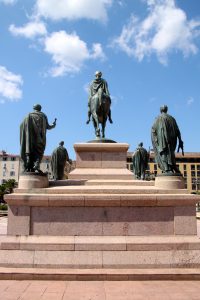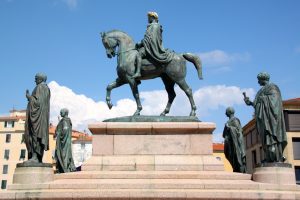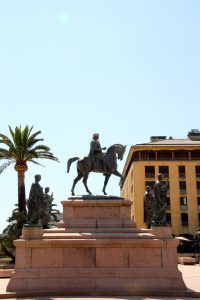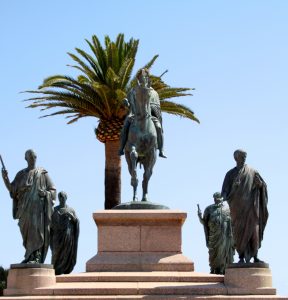- CountryFrance
- Town:Ajaccio/Corsica
-
Year of creation:1865
- Rider(s):Napoleon I
(1769–1821), a French military and political leader during the latter stages of the French Revolution, was emperor of the French from 1804 to 1815. His legal reform, the Napoleonic Code, had a significant influence on many civil law jurisdictions worldwide, but he is best remembered for the wars he led against a series of coalitions: the Napoleonic Wars. He established French hegemony over most of continental Europe, and sought to spread the ideals of the French Revolution while consolidating an imperial monarchy. Due to his success in these wars, often against numerically superior enemies, he is widely regarded as one of the greatest military commanders of all time.
The 1812 French invasion of Russia marked a turning point in Napoleon’s fortunes. His Grande Armée was badly damaged in the campaign and never fully recovered. In 1813, the Sixth Coalition defeated Napoleon’s forces at Leipzig. In the following year, the Coalition invaded France, forced Napoleon to abdicate and exiled him to the island of Elba. Less than a year later, he escaped from Elba and returned to power, but was finally defeated at the Battle of Waterloo in June 1815.
Many equestrian statues of Napoleon I, erected during his lifetime, were later pulled down and used as raw materials for other statues, for example the one of Henri IV in Paris. At least six equestrian statues survive, all dating from the second half of the nineteenth century.
- Sculptor(s):Barye, Antoine-Louis
(1795 –1875) was a Romantic French sculptor most famous for his work as an animalier, a sculptor of animals.
-
In August of 1854, the General Council of Ajaccio decided to commission a monument to Napoleon and his four brothers. And so in 1862 a committee was formed to gather the necessary funds through public underwriting. The committee was presided over in Paris by Prince Jérôme Napoleon and the first underwriters were the ministers of Napoleon III.
The design of the monument was commissioned from Eugene Viollet–Le–Duc and six sculptors were employed to carry out the work: Antoine–Louis Barye made the equestrian statue of Napoleon I, the plaster model for which is in the Musée d’Orsay; Aimé Millet that of Joseph; Gabriel–Jules Thomas that of Lucien; Jean–Claude Petit that of Louis and Jacques–Léonard Maillet that of Jérôme. Gabriel–Vital Dubray made two grey granite exedrae topped by Winged Victory. Napoleon was represented in triumph, his head crowned with a laurel wreath, the chlamys at his shoulder and in his right hand a globe topped by a small figure of Victory: the whole a perfect illustration of the idea of Caesar the conqueror and victor.
The monument was officially inaugurated in 1865 and faced toward the sea on the precise instructions of Viollet–Le–Duc. In 1969, on the occasion of the bicentennial of Napoleon’s birth, it was moved and faced toward the city. At this time, the Winged Victories and semi–circular benches were moved to the Place d’Austerlitz.
(source: Napoleon e I Bonaparte, napoleonsites.eu)
(pictures by Ronald Bisschop, 2018)








